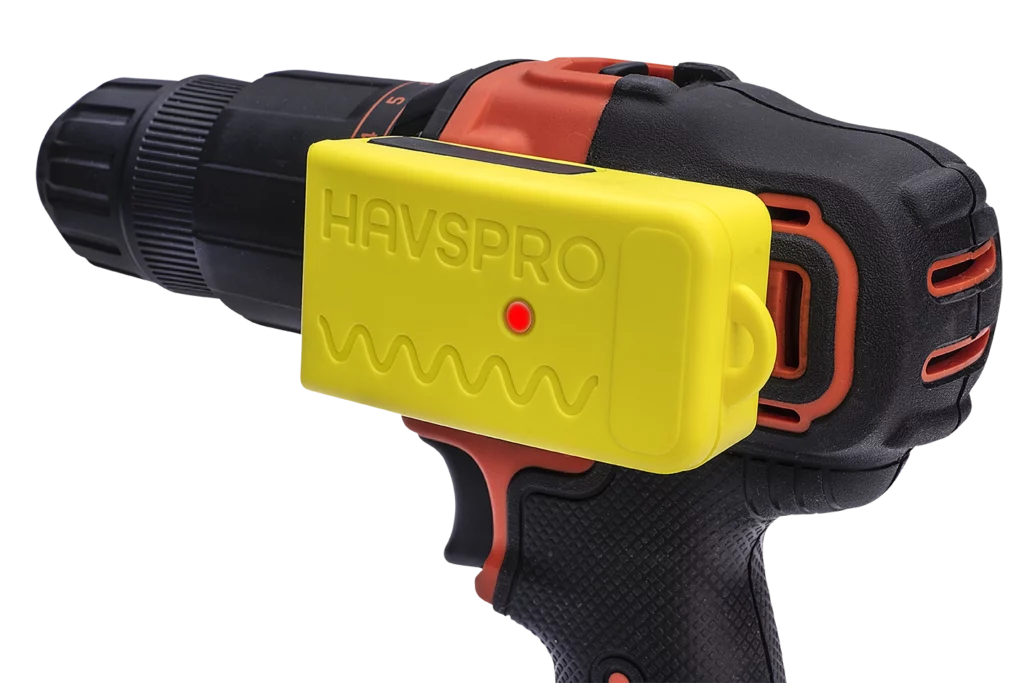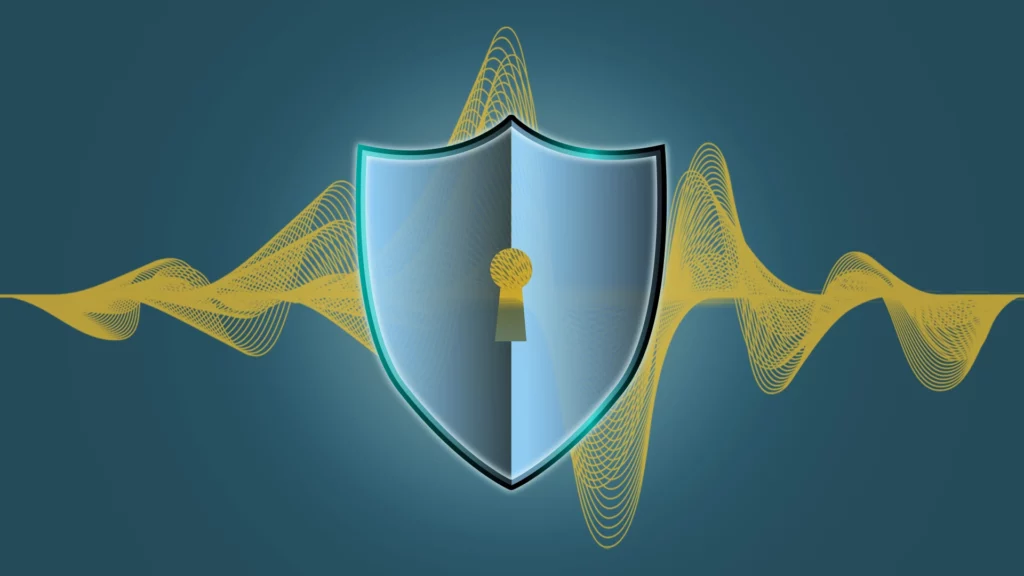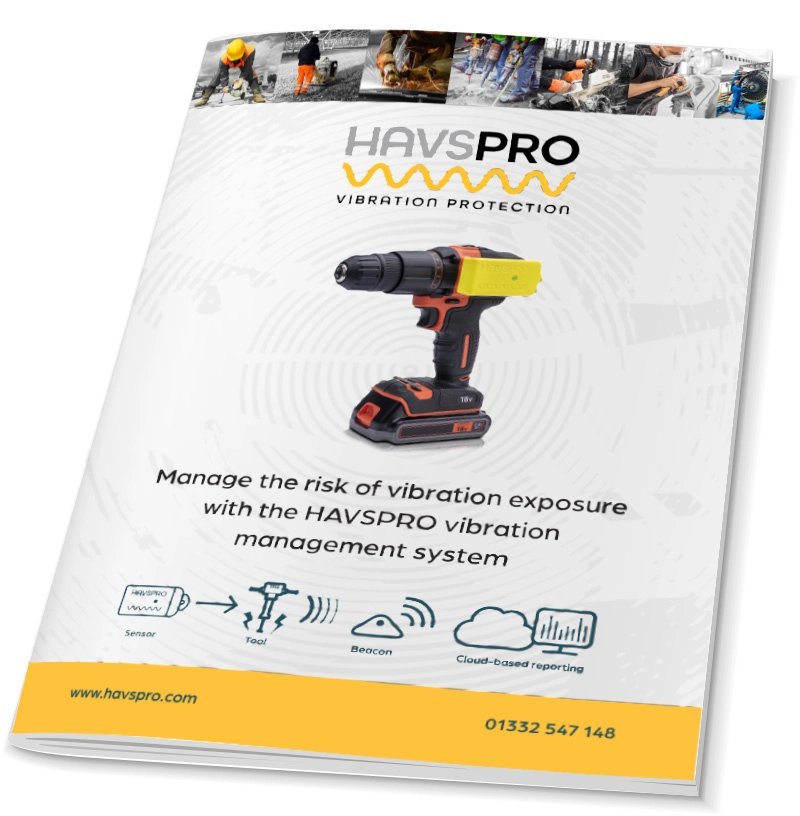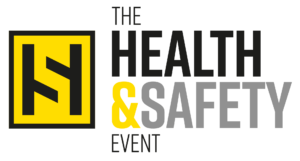The Health & Safety Executive enforce the Control of Vibration at Work Regulations 2005, which aims to protect against hand arm vibration syndrome (HAVS) and whole-body vibration health conditions.
As a business or organisation who uses vibrating tools or equipment, you are legally required to manage the risk posed by vibration to as low as reasonably practicable (ALARP). If the HSE inspect you and find you have not managed the risk from vibration to ALARP, and don’t have suitably robust strategies in place to take action when vibration reaches dangerous levels, you will be liable for fines and legal action.
SIXIS Technology MD, Russ Langthorne discusses how real-time, accurate, continuous monitoring and measurement must be part of your vibration risk management strategy.
Mandate continuous monitoring and measurement
No organisation wants to find itself in front of the Health & Safety Executive with questions to answer regarding hand arm vibration. Whether it is for not reporting cases correctly to RIDDOR, or for failing to adequately manage the risk from vibration to ALARP. There have been cases where the failure to put adequate control measures in place has resulted in huge fines and legal costs.
 But what if all this could be avoided, and we could confine hand arm vibration syndrome, and whole-body vibration conditions, to the annals of time? Russ argues that the only way to confidently and fully achieve this is by continuously measuring and monitoring vibration exposure. Something which is currently not advised by the Health and Safety Executive. He believes this is entirely possible, and has developed a product that does just that – HAVSPRO, but more about this later.
But what if all this could be avoided, and we could confine hand arm vibration syndrome, and whole-body vibration conditions, to the annals of time? Russ argues that the only way to confidently and fully achieve this is by continuously measuring and monitoring vibration exposure. Something which is currently not advised by the Health and Safety Executive. He believes this is entirely possible, and has developed a product that does just that – HAVSPRO, but more about this later.
First, let’s talk about continuous measuring and monitoring of vibration exposure and why it is the only way to confidently protect businesses and operators from hand arm vibration syndrome.
One of the recent judgements happened in November 2022 when Powys Health Board were fined £160,000 for “serious and systemic failures” to address health and safety risks. This judgement came after a group of Estates workers were diagnosed with Hand Arm Vibration Syndrome.
 The most shocking thing about this case is that the Judge wanted to fine Powys Health Board £1.1 Million because this is what he felt was a fair representation of the level of failure by the Board. However, he significantly reduced this amount to £160,000 as he recognised it would be the people of Powys who would ultimately have paid the price as the Board would have been unable to service them fully.
The most shocking thing about this case is that the Judge wanted to fine Powys Health Board £1.1 Million because this is what he felt was a fair representation of the level of failure by the Board. However, he significantly reduced this amount to £160,000 as he recognised it would be the people of Powys who would ultimately have paid the price as the Board would have been unable to service them fully.
These employees now suffer from Hand-Arm Vibration Syndrome (HAVS) – sometimes known as ‘White Finger’ – a debilitating and permanent condition which Russ Langthorne believes shouldn’t still be happening.
“There’s no need for hand arm vibration syndrome to still be happening. Technology exists today that can make HAVS and Whole-Body Vibration (WBV) a thing of the past. This isn’t to say that exposure to vibration itself can be eliminated. It’s an inevitable side-effect of using power tools and equipment. What can be controlled is the level of exposure to vibration, in order to provide manageable limits that protect the worker from long-term risk, and therefore also protect their employer from culpability.”
Knowing when to stop
The Control of Vibration at Work Regulations 2005 state that two criteria points which need to be carefully assessed when managing the risk of vibration exposure. The first is a worker’s Exposure Action Value (EAV), the point at which it is vital for the worker (or their employer) to take action. The second is the Exposure Limit Value (ELV): the absolute daily limit at which a worker must down tools.
Monitoring the EAV of an operative gives you the ability and opportunity to mitigate and manage the risk posed by vibration exposure. Action must be taken when EAV is reached – but how can you take action if you don’t know when it is reached? And how do you know it has been reached if you aren’t continuously measuring and monitoring exposure in real time?
 The same applies when ELV is reached – an operative must not, by law, be exposed to any further vibration in that 24 hour period. But how can this be ensured if precise, accurate vibration exposure isn’t being captured?
The same applies when ELV is reached – an operative must not, by law, be exposed to any further vibration in that 24 hour period. But how can this be ensured if precise, accurate vibration exposure isn’t being captured?
Technology, in the form of the HAVSPRO system, ensures everybody who needs to know, knows when a worker is nearing their EAV or ELV. And this includes the operative, as well as the supervisor or manager and the Health and Safety Representatives. At HAVSPRO, we believe that simplicity is best, with an amber light when EAV reached, a flashing red light when 90% of ELV is reached and a solid red at 100% ELV. These warnings are also texted and emailed to whoever needs them.
This proactive approach, which utilises continuous measuring and monitoring of vibration data as it is experienced by the operative, means over-exposure need never occur again. The risk can genuinely be managed to as low as reasonably practicable because data-driven decision-making is now possible.
Summary
Now that technology has made it possible to continuously measure and monitor vibration exposure and therefore manage the risk to ALARP, why wouldn’t you?
Download the HAVSPRO brochure below and see how the system allows for proactive risk management, and complete protection against hand arm vibration – for your business and your workers.



